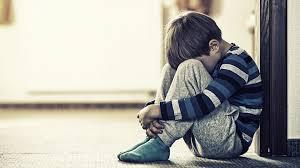Introduction
Every child has the right to grow up in a safe, supportive, and loving environment. Childhood is meant to be a phase of joy, learning, and discovery. Sadly, not every child experiences this reality. Many face challenges that strip them of their innocence and leave long-lasting scars.
This is where child abuse cases come into the picture. These cases reveal the heartbreaking truth of neglect, violence, and exploitation suffered by children worldwide. Understanding the impact and knowing the legal remedies is vital for protecting children and building a safer society.
What Are Child Abuse Cases?
Child abuse refers to any intentional harm or mistreatment of a child under the age of 18. It can take multiple forms such as physical abuse, emotional abuse, sexual exploitation, and neglect. Child abuse cases usually come to light when a child’s safety, health, or overall well-being is threatened.
Some common types of abuse include:
-
Physical Abuse: Hitting, kicking, or causing physical injuries.
-
Emotional Abuse: Constant criticism, rejection, or verbal humiliation.
-
Sexual Abuse: Exploitation, harassment, or inappropriate contact with children.
-
Neglect: Failure to provide food, shelter, medical care, or emotional support.
These forms of abuse not only harm children immediately but also create long-lasting emotional and psychological damage.
The Alarming Impact of Child Abuse
The consequences of child abuse extend far beyond visible injuries. They shape a child’s emotional development, mental health, and even their ability to trust others.
-
Psychological Trauma – Victims often suffer from anxiety, depression, and post-traumatic stress disorder (PTSD).
-
Educational Setbacks – Abused children may struggle to concentrate, leading to poor performance in school.
-
Health Issues – Both physical injuries and mental health struggles affect long-term well-being.
-
Social Isolation – Many children withdraw from social interactions due to fear or shame.
-
Cycle of Abuse – Without intervention, victims may later replicate abusive behaviors as adults.
These outcomes highlight why child abuse cases must be addressed quickly and effectively.
Warning Signs to Watch For
Children rarely disclose abuse directly, making it crucial for parents, teachers, and caregivers to recognize the warning signs. Some red flags include:
-
Unexplained bruises, burns, or injuries.
-
Extreme fear of certain adults or environments.
-
Sudden changes in behavior, such as withdrawal or aggression.
-
Regression to earlier behaviors like bedwetting or thumb-sucking.
-
Poor hygiene, malnutrition, or lack of medical care.
Recognizing these signs early can save a child from continued harm.
Legal Remedies in Child Abuse Cases
Child abuse is not just a moral issue—it is a legal one. Many countries, including the United States, have strict laws to protect children from abuse and neglect. In the U.S., both federal and state laws outline protective measures, and failure to report abuse can even result in penalties for adults.
Key Legal Protections:
-
Mandatory Reporting Laws – Teachers, doctors, and caregivers are legally required to report suspected abuse.
-
Protective Custody – Authorities can remove children from unsafe homes and place them in foster care.
-
Restraining Orders – Abusers can be legally prohibited from contacting or approaching victims.
-
Criminal Charges – Abusers may face serious penalties, including imprisonment.
-
Civil Remedies – Victims and their families may seek compensation for damages caused by abuse.
Legal remedies ensure that children are not only removed from harmful situations but that abusers face consequences for their actions.
Role of Lawyers in Child Abuse Cases
Attorneys play a crucial role in protecting children and ensuring justice is served. They can:
-
Represent victims in court.
-
Help families file restraining orders or custody cases.
-
Advocate for child protection services.
-
Provide guidance on compensation claims.
-
Ensure the child’s rights are prioritized throughout the process.
If you or someone you know suspects abuse, consulting a qualified lawyer is one of the first steps toward justice.
Prevention of Child Abuse
While legal remedies are essential, prevention is equally important. Building awareness, educating parents, and creating safe environments can significantly reduce child abuse cases.
Prevention Strategies:
-
Parental Education: Teaching parents about positive discipline methods.
-
Community Programs: Offering support groups, workshops, and counseling.
-
School Awareness Campaigns: Training teachers and staff to spot early signs.
-
Public Awareness: Breaking the stigma and encouraging open conversations.
-
Hotlines & Helplines: Providing children with safe ways to seek help.
Preventing abuse requires collective responsibility from families, schools, and society at large.
Real-Life Stories and Awareness
Many child abuse cases have gained public attention, sparking debates about safety and legal protections. Stories of survivors show resilience and inspire change. While these cases are often heartbreaking, they help raise awareness and push for stronger laws.
By talking about these issues openly, we can create a society where children feel safe to report abuse and adults feel responsible to act.
Conclusion
Childhood is meant to be a time of innocence and growth, not fear and pain. Sadly, many children continue to suffer due to neglect, violence, and exploitation. Child abuse cases highlight the urgent need for awareness, timely intervention, and strong legal action.
With the right combination of prevention, legal remedies, and community support, it is possible to break the cycle of abuse and create a world where every child can live safely. Protecting children is not just the responsibility of parents—it’s a duty shared by all of us.



